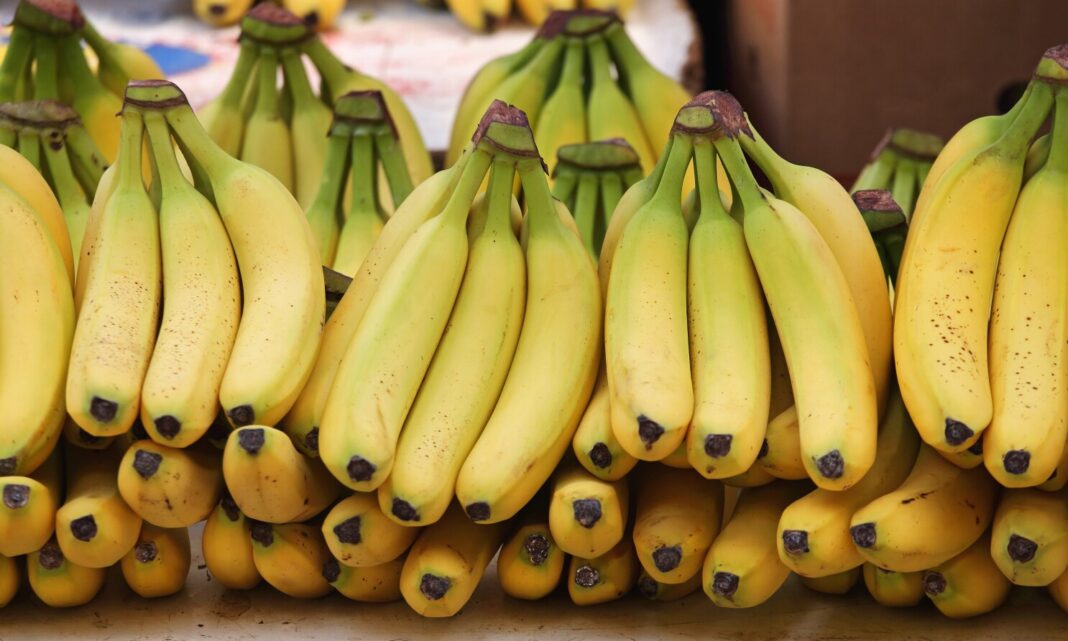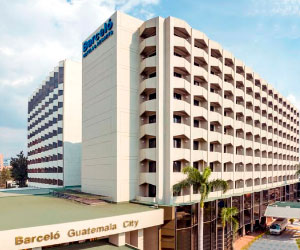Fresh Del Monte is warning such a shortage is on the horizon, with shifting climate patterns and disease pressures resulting in diminished supplies in key growing regions like Costa Rica, where production is down 23%.
Fresh Del Monte Chairman and CEO Mohammad Abu-Ghazaleh has been warning of a global shortage in banana production for some time — a shortage he says has been caused by shifting climate patterns and disease pressures, primarily from Black Sigatoka and Tropical Race 4 (TR4) in key growing regions including Central America.
To learn more about the severity of declining banana supplies, what the company is doing to combat disease pressures and what’s ahead for banana supplies and prices at the grocery store, The Packer recently connected with Jorge Pelaez Reyes, senior vice president of Central America at Fresh Del Monte.
Can you elaborate on what caused the shortage and where supplies stand now?
Pelaez Reyes: The impact of Sigatoka has been particularly severe in Costa Rica. As of the latest data from May 2025, production has declined by 23%, equivalent to a loss of 12.4 million boxes. This reduction is attributed to two main factors: approximately 7% due to adverse weather conditions, which led to lower fruit availability, and the remaining 16% due to Sigatoka-related issues.
In contrast, other regions have not yet reported significant production losses from the disease. However, there has been a noticeable increase in fungicide application cycles to maintain control.
In all the countries in the region, Black Sigatoka is present. TR4 has been reported in Colombia and Peru, but other countries in the region have not confirmed the presence of TR4 as of now.
Countries like Ecuador and Guatemala have increased their production volumes in the first half of the year, but this growth is not sufficient to offset the declines seen in Costa Rica and Panama or to meet the year-over-year increase in market demand.
Are supplies continuing to decline, and if so, what are the implications for supplies in the next one to three years?
The production decline observed so far is significant and driven by multiple factors. While some, such as disease pressure, are expected to persist, the severe impact of weather conditions may be partially mitigated through the proactive measures we’ve implemented and surely others in the industry will do as well. At the company level, we are adopting new agricultural practices aimed at reducing long-term vulnerability to these challenges.
Despite these efforts, current shortages should continue in the coming years, limiting the industry’s ability to meet market demand, particularly in the first semester, which traditionally sees lower fruit availability even under normal conditions. Additionally, the rising costs associated with disease and pest control, as well as preventive actions against weather-related impacts, are likely to be reflected in higher banana production costs in the coming years.
How does this impact crop planning? What are you seeing in terms of input costs and banana farm viability?
We have significantly adapted our agricultural practices in response to the growing challenges posed by climate change and the consequent disease pressures. The changing climate has intensified pest and disease activity, requiring a shift from traditional chemical-based approaches to more integrated and sustainable solutions.
To address these challenges, we’ve implemented a range of agronomic improvements, such as:
Better conditions for plant growth.
Improving drainage systems and maintenance practices to better handle increasingly intense rainfall.
Leveraging pseudostem reserves in new ways to help plants better withstand drought.
Promoting soil health through cover crops, organic inputs and smarter irrigation practices.
All of these practices have been validated through extensive trials by our research team, ensuring they deliver meaningful, measurable impact.
What are you doing to manage Black Sigatoka?
The pressure from Black Sigatoka has increased and is affecting all plants, but particularly the plants with slower leaf emission rates.
Our response includes:
- Enhancing water management on our farms with better drainage networks, efficient irrigation practices and consistent maintenance to reduce plant stress and improve leaf development.
- Implementing improved plant distribution methods to optimize nutrient and fertilizer use, prevent overcrowded or empty areas, and create a balanced microclimate. Proper spacing ensures better sunlight exposure, reduces excess moisture, and supports a well-structured canopy for more effective chemical application.
- Promoting faster leaf emission through improved plant nutrition and soil management. These measures help the plant maintain a healthy leaf canopy, which is critical for resisting the fungus and sustaining productivity.
Is TR4 an Issue in Central America?
While TR4 has not yet been detected in Central America, we are in a proactive prevention phase. We’ve established clear biosecurity protocols across our farms to prevent its introduction. But if the disease appears, we are prepared with proven methodologies from our operations in Asia, where we have gained valuable experience in:
Early detection and containment strategies.
Cost-effective disease management practices.
Long-term planning for affected areas.
As a long-term solution, our R&D team is actively trying to find varieties with tolerance to TR4.
How much of the world’s banana supply comes from Central America? What’s at stake for Central America if solutions are not found to address climate and disease pressures?
This following data refers specifically to tropical Latin America, focusing on countries that are major exporters of bananas. While I don’t have global figures, the estimated total production in these tropical Latin American countries exceeds 700 million boxes.
In terms of plant health, all countries in the region are dealing with the presence of Black Sigatoka. Additionally, Ecuador, the largest exporter in the region, is currently facing a significant challenge with Moko disease.
Latin American productions are exported to many different regions (such as Asia-Pacific, the Middle East, Europe and North America), therefore, any production decline due to these issues can have global implications.
How might these issues impact banana supplies and pricing at the grocery store?
The ongoing banana shortage, primarily caused by the devastating Tropical Race 4 (TR4-Panama disease) and the Black Sigatoka along with the accelerating impacts of climate change, will significantly disrupt consistent supply to markets and necessitate substantial adjustments to our pricing strategies.
To bolster our supply chain resilience, we are proactively implementing stringent biosecurity measures and investing in climate-resilient farming practices within our farms. Crucially, we are also strategically expanding into new, geographically diverse territories and exploring the cultivation of disease-resistant banana varieties to mitigate concentration risk and secure a more stable supply. This multifaceted approach aims to minimize interruptions and ensure we can meet market demand.
What is Fresh Del Monte doing to combat these issues?
In the short term, we are implementing targeted programs to optimize production during periods when banana plants are naturally more productive. By leveraging our detailed research on banana growth cycles, we are able to shift production to these productive windows. This involves applying agronomic techniques to either accelerate or delay harvests, allowing us to better align fruit availability with market demand. These adjustments help us balance production more evenly throughout the year.
Looking ahead, our long-term strategy focuses on two key fronts:
- Expansion of cultivation areas — We are actively evaluating our unplanted lands across Central America to identify new areas suitable for banana cultivation. This will help us increase overall production capacity and mitigate regional supply constraints.
- Empowering growers through research, helping them adapt planting practices and adjust production timing so they can pack and sell all available fruit — Our highly skilled research department plays a critical role in supporting both current and potential growers. We provide growers with data-driven programs that enable precise harvest planning — advancing or delaying harvests to avoid overproduction and minimize waste.
Additionally, we offer solutions to maximize fruit utilization, including packing smaller or non-standard bananas (such as single fingers or fruit with lower calibration) to meet diverse global market demands. This approach ensures that growers working with us can monetize their entire yield, enhancing sustainability and growing profitability.
By combining short-term tactical adjustments with long-term strategic investments, Fresh Del Monte is proactively addressing the banana supply shortage while strengthening the resilience of its supply chain.
I’ve spoken with other banana suppliers who have been working on banana varieties resistant to TR4. Are new disease-resistant varieties in the works at Fresh Del Monte’s growers’ farms? Is there a gap between when these new banana varieties will be available to bring to market and declining supplies?
Developing new banana varieties at a commercial scale is a lengthy process, as each proposed line must be thoroughly tested in the field to validate its performance. Fortunately, TR4 has not yet been reported in the major exporting countries within our region, which gives us a valuable window of time to prepare and act proactively.
The availability of resistant planting material will depend on several factors: the timing of disease emergence, the performance of new lines, the adjustments required for commercial deployment and the volume of plants needed to meet farm demands. These variables make strategic planning essential to minimize future disruptions.
However, our banana farms in the Philippines have provided our R&D team the opportunity to closely understand the disease and its impact on all varieties available today with some level of tolerance. (https://www.thepacker.com/news/industry/are-we-headed-global-banana-shortage)

















